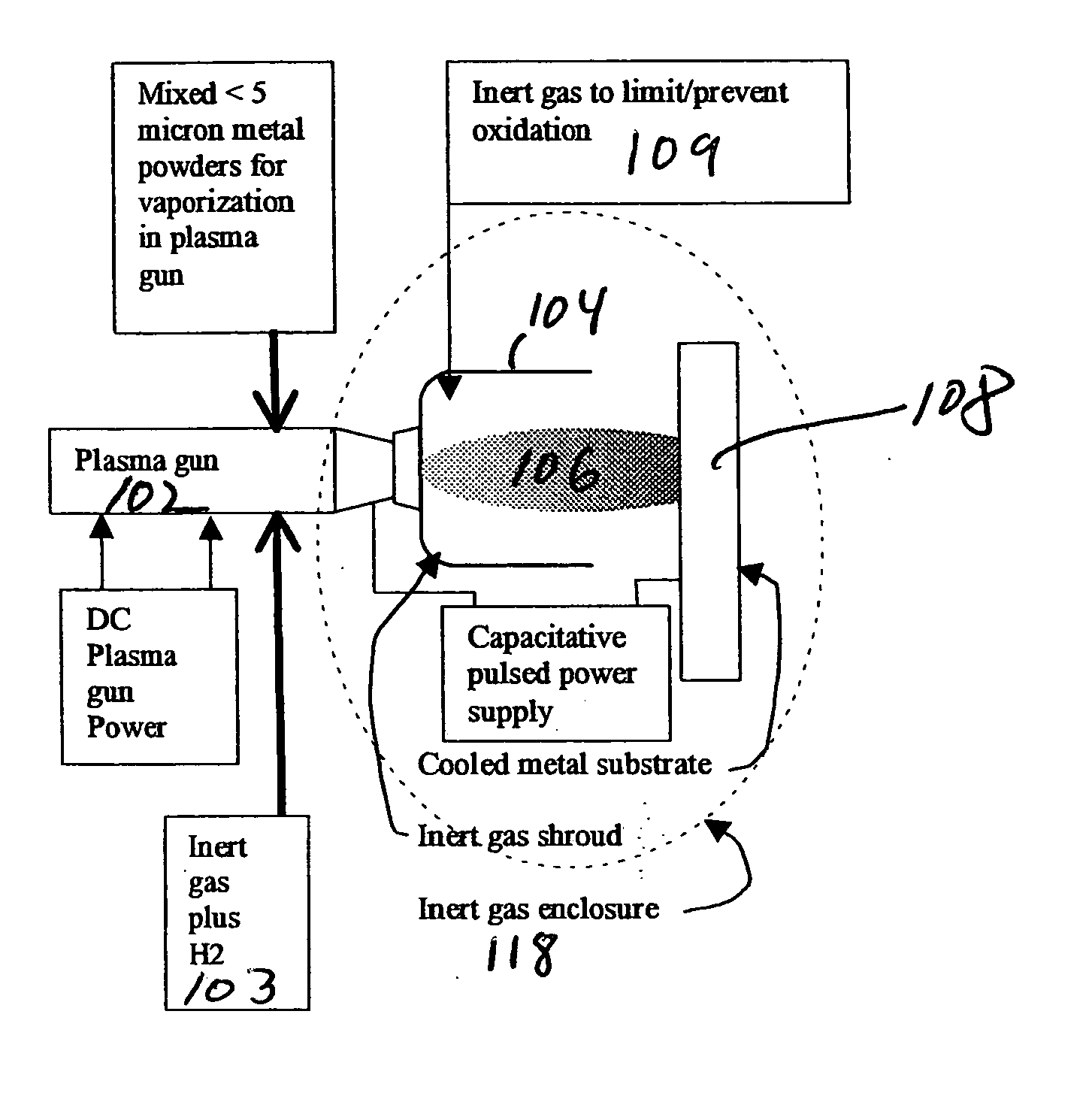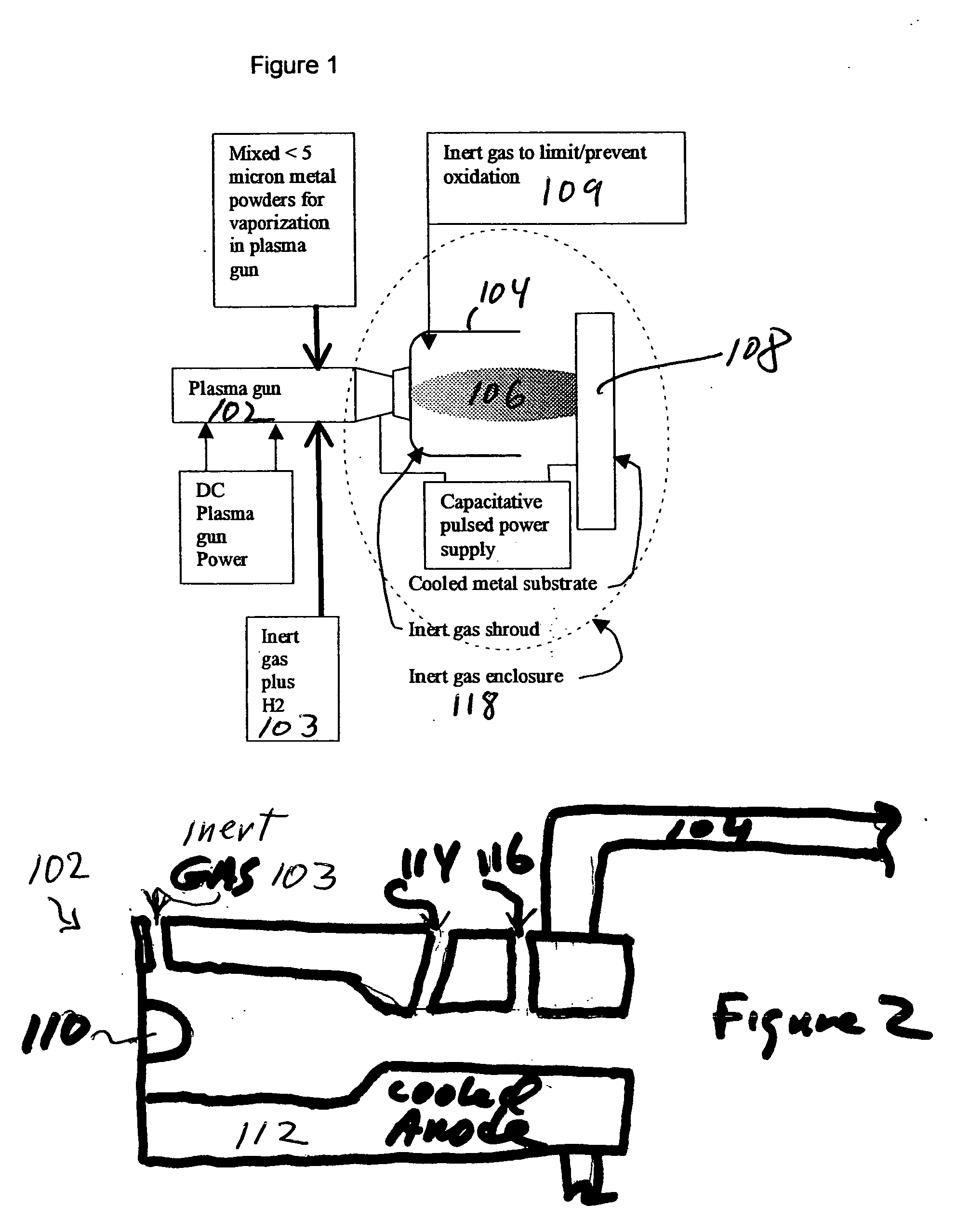Amorphous metal deposition and new aluminum-based amorphous metals
a technology of amorphous metals and amorphous metals, applied in the field of amorphous metal deposition and new aluminum-based amorphous metals, can solve the problems of increasing the cost and complexity of the process, reducing the porosity of thermally sprayed coatings, and difficulty in producing adherent coatings, etc., and achieves high levels, increased impact or shear rate, and increased toughness of amorphous metals
- Summary
- Abstract
- Description
- Claims
- Application Information
AI Technical Summary
Benefits of technology
Problems solved by technology
Method used
Image
Examples
example 1
[0043] An iron-based BMG having a composition of (Fe66Mn29Cr5)68Zr4Nb4B24 (atomic percent) is vaporized in the plasma gun 102, and condensed and solidified on a steel substrate 108 which is actively cooled to −10° C. by a glycol cooling stream and refrigeration unit. The feed rate of the alloy powder having a particle size of less than 3 microns is 1 pound per hour with 5-10 scfh of argon 103. Argon is fed to the plasma spray gun 102 at a rate of about 75 scfh, and DC power is fed to the plasma spray gun to produce a plasma temperature of over 20,000° K. The vapor plasma plume is moved along the substrate at a rate of about 2 meters / second at a distance from the end of the gun to the substrate of 5-15 cm. The deposition is carried out in a vacuum in the chamber of approximately 0.01 to 0.1 atmosphere. A slight excess (e.g., 5 atom percent) of the more volatile boron component may be included in the small diameter powder, to produce the desired BMG stoichiometry in the condensed vapo...
example 2
[0044] In this example, an aluminum-based alloy from Table 2 having a composition of (Al85Y8Ni5Co2)70Ba8Ca210Si20 or (Al85Y8Ni5Co2)70(Zr,Ti)10B18Si2 (atomic percent) is applied to a cooled, clean copper sheet as described in Example 1, with a similar result. Excess Ca and Al may be used in the input powders, as empirically determined, to obtain the desired atomic ratio in the deposit.
example 3
[0045] In this example, a copper-based BMG having a composition Cu40Ti30Ni15Zr10Sn5 (atomic percent) is applied to a cooled copper sheet as described in Example 1, with a similar result
PUM
| Property | Measurement | Unit |
|---|---|---|
| Tg | aaaaa | aaaaa |
| crystallization temperature | aaaaa | aaaaa |
| particle size | aaaaa | aaaaa |
Abstract
Description
Claims
Application Information
 Login to View More
Login to View More - R&D
- Intellectual Property
- Life Sciences
- Materials
- Tech Scout
- Unparalleled Data Quality
- Higher Quality Content
- 60% Fewer Hallucinations
Browse by: Latest US Patents, China's latest patents, Technical Efficacy Thesaurus, Application Domain, Technology Topic, Popular Technical Reports.
© 2025 PatSnap. All rights reserved.Legal|Privacy policy|Modern Slavery Act Transparency Statement|Sitemap|About US| Contact US: help@patsnap.com



